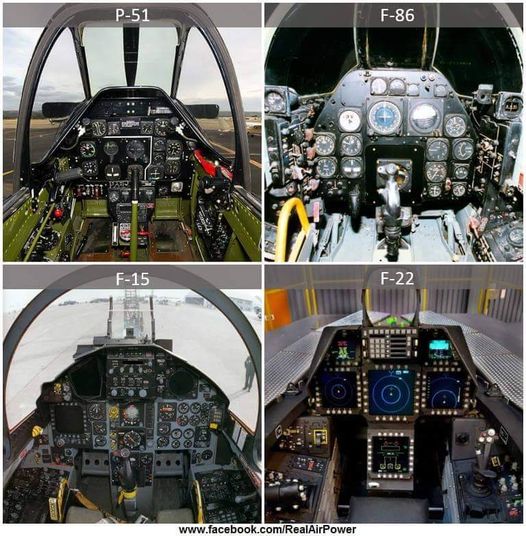From the F-106 to the F-35, the transformation is staggering.
The miniaturization of computing power has dramatically changed the fighter cockpit.
Microprocessors have allowed engineers to replace scores of dials and switches with just a handful of touchscreen delays.
The result is a more efficient, less fatiguing flight control system for the 21st century pilot.
A new retrospective on the history of fighter jet cockpit controls moves through 65 years of analog, and later digital, evolution. Thanks to the computer processor and display technologies, pilots can now concentrate their attention on a handful of screens and controls, allowing them to focus on other, more important tasks—like shooting down enemy planes.
 F-106 Delta Dart Cockpit.National Museum of the U.S. Air Force.
F-106 Delta Dart Cockpit.National Museum of the U.S. Air Force.
Over at the Hush-Kit aviation blog, former U.S. Navy TOP GUN instructor and F-14 backseater Dave ‘Bio’ Baranek has written a brief history of the fighter jet cockpit. The history starts with the Convair F-106A Delta Dart, which served as an interceptor fighter from the 1960s to 1988.
The F-106A, with its dials, gauges, switches, and control stick mounted between the pilot’s legs, was atypical of fighters in that period, with readouts capable of only displaying a single type of information.
The incorporation of the microprocessor and liquid crystal display led to a gradual overhaul of the cockpit space. Cockpits slowly grew less cluttered, as engineers discovered ways to use the space more efficiently. Single-purpose displays gradually yielded to multi-function digital displays (MFDs) that could call up multiple types of information.
The introduction of MFDs led to a dilemma: the control stick, stuck between the pilot’s legs, got in the way of viewing them. This led to the control stick being repositioned to the left side, or right, to give the pilots an unobstructed view and not cramp the space in front of them. The F-16 Fighting Falcon was one of the first jets to use a side-mounted control stick.
 The main display aboard a F-35 cockpit.Richard Baker//Getty Images
The main display aboard a F-35 cockpit.Richard Baker//Getty Images
Decades later, the difference between the F-106A cockpit and the F-35 is striking. The F-35 features a large multifunction touch display that dominates the cockpit, displaying information such as radar data while also allowing the pilot to fly the airplane.
Compared to its Cold War predecessors, the F-35 features barely any physical buttons and readouts at all.
 A Dutch F-35A pilot gets fitted for his custom helmet, which incorporates a helmet mounted display.U.S. Air Force photo/Staff Sgt. Nick Egebrecht
A Dutch F-35A pilot gets fitted for his custom helmet, which incorporates a helmet mounted display.U.S. Air Force photo/Staff Sgt. Nick Egebrecht
Today, many fighter jets—the F-35 included—have gone a step further, positioning data right in front of a pilot’s eyeballs. An increasing number of jets now utilize the helmet-mounted display (HMD). The HMD projects data directly into the wearer’s field of view, allowing the pilot to see critical information without taking his or her eyes off an adversary in combat.
